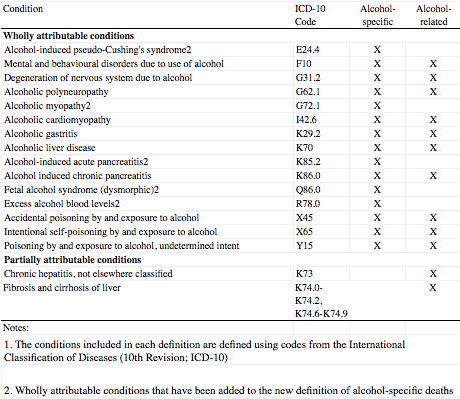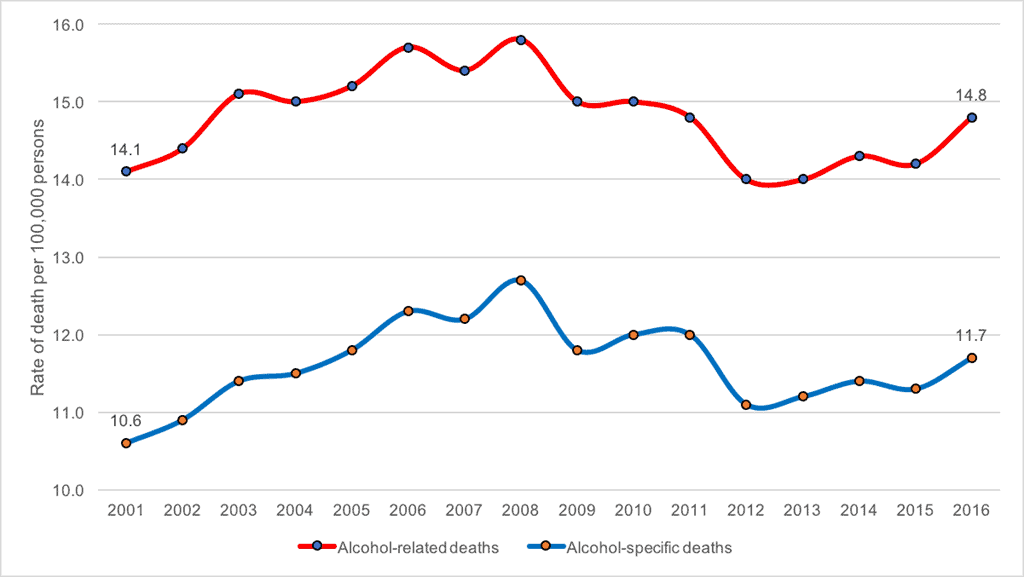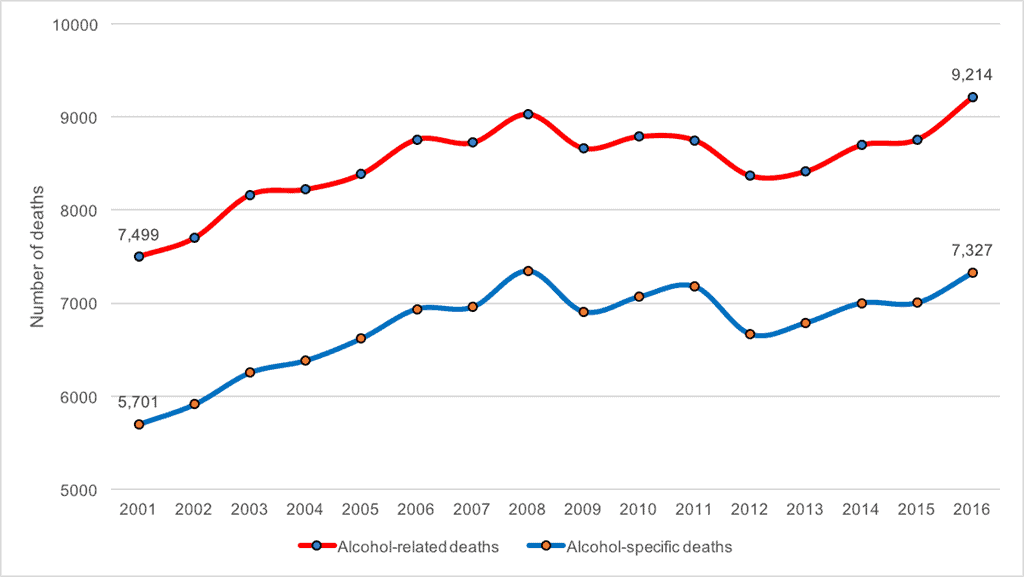 |
The Office for National Statistics (ONS) has released a report calculating the number of alcohol deaths in the UK in 2016, under a new “alcohol-specific” measure. The figures, however, appear to tell the same old story about alcohol deaths.
In 2016, there were 7,327 “alcohol-specific” deaths in the UK, an age-standardised rate of 11.7 deaths per 100,000 population. The rate of deaths remains largely unchanged since 2013, but is still higher than observed 15 years ago, the ONS says.
The statistical agency’s shift to a new standard is down to a narrowing of alcohol deaths, where each death is a direct consequence of alcohol misuse (i.e. wholly-attributable deaths).
As a result, the conditions behind these types of alcohol deaths crucially exclude unspecified hepatitis (K73) and fibrosis and cirrhosis of the liver (K74, excluding biliary cirrhosis) – as they are partially attributable to alcohol – in favour of a “consistent definition” of “alcohol-specific” deaths (illustrated, right).
Trend data show that, although lower than the old “alcohol-related” deaths, alcohol-specific deaths are have increased at a greater number and rate over the last 15 years (below).
 |
 |
New method disputed
The narrower, “alcohol-specific” definition of alcohol deaths has raised questions among public health experts, who, according to a recent editorial in The Lancet, called on the ONS in the consultation period before the change was made to do further research into the aetiology of deaths attributed to codes K73 and K74 (the latter of which accounts for the vast majority of the decrease in numbers) before discounting them entirely.
However, the ONS pressed on with the narrower definition, which was argued “could come at a steep cost to alcohol advocacy efforts and to the health and well-being of those affected by alcohol addiction and misuse in the UK.”
Given the dispute raised in public health quarters, it is important to remember that more complete definitions of alcohol deaths – ones that take into account partially attributable causes – are provided by the public health agencies. Public Health England’s Local Alcohol Profiles dataset estimated that almost 24,000 deaths were caused by alcohol in 2016, the Scottish Public Health Observatory estimated that around 1 in 20 (5%) of all deaths in Scotland are caused by alcohol, and in Wales it is estimated that 1,500 alcohol deaths were caused by alcohol between 2010 and 2012. A separate definition of alcohol deaths is not available for Northern Ireland, however.
The ONS admits that its new definition “underestimates the burden of alcohol consumption on mortality as it excludes diseases where there is evidence showing that only a proportion of the deaths, for a given cause, are caused by alcohol”, and that these definitions “benefit from providing a more realistic estimate of deaths caused by alcohol.”
Underlying narratives unchanged
Despite the ONS’s changes, many underlying narratives about alcohol deaths remain the same:
- The male alcohol-specific death rate continues to be more than double the rate among females.
- For both sexes, rates of alcohol-specific deaths were highest among those aged 55 to 64 years in 2016.
- Scotland remains the constituent country with the highest rate of alcohol-specific deaths in 2016; yet Scotland has also seen the largest decrease in its rates since they peaked in the early 2000s.
- In England, for both sexes, alcohol-specific rates in 2016 were significantly higher in the most deprived local areas when compared to the least deprived local areas.
The ONS also provided figures using the old “alcohol-related” deaths definition one last time. This showed that there were 9,214 deaths attributable to alcohol in 2016, up 5% on 2015, when there were 8,758 deaths. The rate also increased from 14.2 to 14.8 deaths per 100,000 persons, driven largely by a greater rate of increase among men than women.
